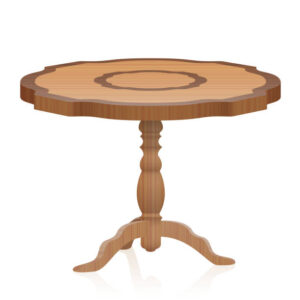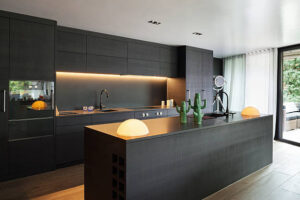Before your child is even able to move, the toys will begin to accumulate quickly. Then, your living room is spotless, but the next moment wooden blocks and activity mats surround you. Kids certainly do have lots of things and toys, but having an area for play or a space within your home will reduce the mess and allow children to lose themselves in their world in a unique space.
Create a plan
Before bringing around a pile of toys, divide the room into different sections and think about how best to organize the different “zones.” Each zone will encourage different types of games. This can also help to keep track of what is where in cleanup time.
If your child enjoys making crafts and coloring, consider setting up an activity area where she can unleash the inner Picasso. (Think about a child-sized table and chairs, a set of bins to store construction paper and coloring books, and a shoe organizer that hangs that can be hung on the wall to keep markers, crayons, and other items inside.) Do you want to encourage reading? Design a cozy library corner with all her books together and next to a baby beanbag or glider to make reading more comfortable.
Encourage play independently
The advantages of playing are innumerable. Inviting children to play with their toys can help boost their language development, encourage socialization, and provide them with a sense of empowerment. Children learn through play and, especially when they are toddlers and just beginning to explore their imaginative muscles, it is essential to allow them some time to do this independently (while being vigilant at all times! ).
You can let her make something tasty with her sets for cooking or even figure out a challenge by herself without any help. You do not need to leave your home to teach your children to play alone. However, you have to give them time to relax so that they can have fun on their own.
Do not forget to protect your baby
The fact that the playroom is full of fun toys doesn’t mean you have to ignore the tried-and-true baby-proofing guidelines. If you’re not cautious, your playroom may still contain certain dangers.
Be sure to prevent your child’s access to potentially unsafe areas by placing gates for babies on the upper and lower ends of staircases and installing child-proof locks on cupboards and any doors that lead to outside sites or other rooms that are not permitted. It is also essential to secure any heavy furniture you use in the playroom (or any other room in the house, for that matter) to avoid the risk of tip-overs. And suppose you have a television in your playroom or another electronic gadget that requires a cable. In that case, you should invest in a cable safety cable concealer or kit to shield them from the curious hands of your children.
Think about a gender-neutral color scheme
The playroom shouldn’t be a mere play area for toys. It could be as stylish as the other rooms in your home by incorporating chic area rugs, striking wallpapers, and other attractive accessories. Like your bedroom, the playroom does not have to be screaming “boy” or “girl,” with blue or pink walls.
You can consider incorporating a gender-neutral color scheme such as this to create a distinctive appearance and allow the possibility of moving furniture and other items to different rooms in the home as your child grows and their playroom evolves.
Create a mini indoor slide
Are you feeling down because of the rain? Bring the play area inside! A slide the size of a pint like this one is ideal for children who are constantly engaged (and it’s sure to allow them to expend the extra energy). You might want to hold off until your child has reached the age of toddlerhood before introducing this slide to the play area or be sure to keep them nearby whenever it’s being used.
Create a cozy reading corner
Let your child be swept away in tales of lands far from home by transforming one corner of this room into a library. A shelf that is easy to access, such as this one, can encourage young readers to choose their books as the covers are visible. Be sure to place it at an appropriate height so it’s accessible for your toddler should she want to read aloud to her.
Create an artistic station
As your child ages, they’ll love making their artwork in preschool. You’ll be proud when you hang them on the refrigerator. But who says that art classes must be held in a school? A space like this one, which includes everything your child needs to create a new work daily, will keep her entertained for many hours. (Bonus that this table has a secret storage compartment, so it could double to serve as a sensory table as well!)
DIY a craft trolley
If your child is a bit overwhelmed by more than enough arts and crafts to keep on a single desk, and even within an office big enough for them, flexing your creative muscles to make a small-sized craft trolley could be the best option. It’s being mounted on wheels makes it easy to move from one place to another, and its large compartments can help you keep track of markers, crayons, and glue sticks, so cleaning is easy. (But we’ll be honest, this is also amazing!)
Concentrate on toys that pretend to be real
If you plan to add new toys to your playroom, you should think of toys that stimulate imagination-based play. This kind of play can begin in the early years (around 18-24 months) and is an essential element of a child’s development in both intellectual and physical. Select toys that look like objects from the real world, such as this toy kitchen set.
Extend horizons using an interactive map that is projected on the wall
Making the playroom an enjoyable learning environment isn’t only about getting toys to teach the A-B-Cs or the 1-2-3s. (Though these are great too!) Think about adding a fun world map or globe to your space so that you can engage your child in discussions about the world beyond the front of her door. You may not know the capitals of states at the age of kindergarten. However, it can aid in orienting her young and provide her with an understanding of the world that we reside in.


